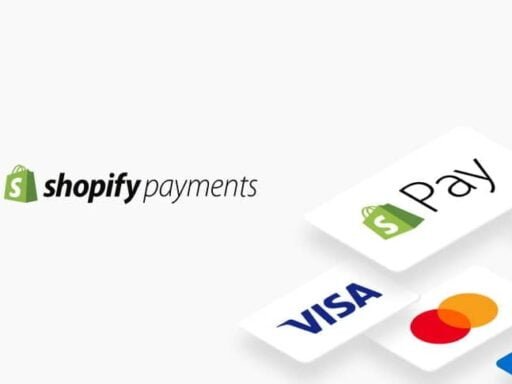Welcome to the beginner’s guide to monetizing your WordPress blog! If you’ve been dreaming of turning your passion for blogging into a source of income, you’re in the right place. Monetizing your WordPress blog can not only help you cover the costs of running your blog, but it can also provide you with an opportunity to earn money doing what you love.
In this guide, we’ll explore various strategies you can use to monetize your blog and start earning money from your WordPress site. From display ads and affiliate marketing to sponsored blog posts and selling exclusive content, we’ll cover it all. Whether you’re just starting out or looking to boost your current income, these strategies can pave the way towards financial success.
Remember, monetizing your blog requires some effort and experimentation. Each strategy comes with its unique set of pros and cons, so it’s important to choose the approach that aligns best with your content, schedule, and target audience. So let’s get started on your journey to monetizing your WordPress blog!
Key Takeaways:
- Monetizing your WordPress blog can help offset the costs of running a blog and provide an opportunity to earn money.
- There are various strategies you can use to monetize your blog, such as display ads, affiliate marketing, sponsored blog posts, selling exclusive content, selling merchandise, offering membership, and asking for donations.
- Each strategy comes with its pros and cons, so it’s important to choose one that aligns with your content, schedule, and audience.
- Experimentation is key – try different strategies and see what works best for your blog and audience.
- By providing valuable content and choosing the right monetization strategies, you can potentially generate a full-time income from your WordPress blog.
Place Display Ads on Your WordPress Blog
To monetize your WordPress blog, one of the most common strategies is to place display ads on your site. Display ads help generate revenue by partnering with advertising networks like Google AdSense. With AdSense, you can display targeted ads that are relevant to your audience.
AdSense operates on a pay-per-click (PPC) model, meaning you earn money when someone clicks on an ad displayed on your blog. The more clicks your ads receive, the more income you can generate.
Before you can start monetizing with display ads, it’s important to meet the requirements of the advertising network and have a good amount of traffic to attract advertisers. This includes complying with AdSense’s policies and guidelines.
Here’s an overview of how you can place display ads on your WordPress blog:
- Create an AdSense account: Sign up for an AdSense account through the AdSense website.
- Set up your ad units: After your AdSense account is approved, you can create ad units. These are blocks of ads that you can place on your blog.
- Configure ad placement: Decide where on your blog you want the display ads to appear. Common locations include the header, sidebar, and within the content.
- Add the ad code to your blog: AdSense provides you with a code snippet that you need to insert into your WordPress theme or using a plugin that supports ad integration.
- Optimize your ads: Experiment with different ad formats, sizes, and placements to find what works best for your blog. AdSense provides performance reports to help you track your ad earnings.
Benefits of Display Ads
Display ads offer several benefits for monetizing your WordPress blog:
- Passive income: Once you’ve set up the ads, they can generate income without much ongoing effort on your part.
- Wide range of advertisers: Display ads can attract advertisers from various industries and niches, increasing your revenue potential.
- Targeted advertising: Ad networks like AdSense use advanced targeting algorithms to display ads that are relevant to your audience, improving the chances of attracting clicks.
- Control over ad placement: You have control over where the ads appear on your blog, ensuring they blend well with your content and don’t disrupt the user experience.
| Pros | Cons |
|---|---|
| Passive income stream | May slow down website load times |
| Wide range of advertisers | Ads can sometimes be irrelevant or intrusive |
| Targeted advertising | Ads may not appeal to all visitors |
| Control over ad placement | Revenue can be unpredictable |
Become an Affiliate Marketer
Affiliate marketing is a powerful strategy that allows you to promote products from third-party brands on your WordPress blog and earn a commission for each sale made through your affiliate links. By partnering with affiliate programs, such as Amazon Associates, you can recommend relevant products to your audience and generate income while providing value.
When you become an affiliate marketer, you have the flexibility to choose products that align with your niche and are genuinely beneficial to your readers. This ensures that your recommendations are authentic and trustworthy, building a strong relationship with your audience.
It’s important to disclose when your links are affiliate links to maintain transparency with your audience. This can be done by adding a disclaimer at the beginning of your blog post or using clear language within your content to indicate that you may earn a commission from the recommended products.
Benefits of Affiliate Marketing:
- Earn passive income: As an affiliate marketer, you can earn money while you sleep. Once you’ve created content with affiliate links, it continues to work for you, generating income whenever someone makes a purchase through your links.
- Expand your product offerings: Affiliate marketing allows you to promote a wide range of products, giving you the opportunity to diversify your income streams and cater to different interests within your audience.
- Enhance your credibility: When you recommend high-quality products that genuinely benefit your audience, you establish yourself as a trusted expert in your niche. This credibility can lead to increased reader loyalty and a higher conversion rate.
By becoming an affiliate marketer, you can turn your WordPress blog into a profitable business venture. Join reputable affiliate programs like Amazon Associates, and start promoting products that resonate with your audience. Remember, always prioritize the needs and interests of your readers, and the commissions will follow.
| Affiliate Marketing Tips |
|---|
| – Choose products relevant to your niche |
| – Write honest and informative product reviews |
| – Place affiliate links strategically within your content |
| – Track and analyze your affiliate performance regularly |
| – Stay updated on the latest trends and product releases |
Write Sponsored Blog Posts
Sponsored blog posts present an excellent opportunity to monetize your WordPress blog. Brands are willing to pay you to mention or review their products in your blog posts, allowing you to earn income while producing valuable content for your audience. Compared to affiliate marketing and display ads, sponsored blog posts can be a more profitable monetization strategy.
To get started, it’s important to establish brand partnerships that align with your niche. Choose brands that resonate with your audience and whose products or services you genuinely believe in. This will ensure that your recommendations are authentic and trustworthy, maintaining the integrity of your blog.
When writing sponsored blog posts, it’s crucial to maintain transparency with your readers. Clearly disclose that the post is sponsored content, and provide an honest review or mention of the brand. Authenticity is key to building trust with your audience and preserving your blog’s credibility.
To increase your chances of securing sponsored opportunities, consider reaching out to brands directly or joining influencer networks that connect bloggers with relevant brand partnerships. Showcase your blog’s unique value proposition and the benefits of partnering with you, such as your audience demographics, engagement rates, and reach.
Remember, while sponsored blog posts can be financially rewarding, it’s important to strike a balance between sponsored and organic content. Your audience should always be your top priority, so ensure that your sponsored posts provide value and align with their interests.
Sponsored Blog Posts: Pros and Cons
Before diving into sponsored blog posts, it’s essential to understand the pros and cons of this monetization strategy:
| Pros | Cons |
|---|---|
| 1. Generate higher income compared to other strategies like display ads and affiliate marketing. | 1. Balancing sponsored and organic content can be challenging, potentially affecting the authenticity of your blog. |
| 2. Opportunities to collaborate with reputable brands and expand your network. | 2. The risk of negative feedback if your readers perceive sponsored content as overly promotional or inauthentic. |
| 3. Elevate your expertise and credibility by showcasing your ability to work with reputable brands. | 3. Time-consuming negotiations and coordination with brand partners. |
By carefully crafting sponsored blog posts and maintaining authenticity, you can leverage brand partnerships to monetize your WordPress blog effectively.
Sell Exclusive Content
If you’re looking for a way to monetize your expertise and offer valuable content to your readers, selling exclusive content can be a profitable strategy. By creating and selling premium content such as exclusive blog posts, printable PDFs, ebooks, and online courses, you can provide your audience with a unique and valuable experience in exchange for payment.
However, before diving into selling exclusive content, it’s important to establish trust with your audience. One way to do this is by providing free content first. By offering valuable free content, you can showcase your expertise and build a loyal following who will be more willing to invest in your premium offerings.
Examples of exclusive content you can sell:
- Exclusive blog posts with in-depth analysis or insider tips
- Printable PDFs with checklists, templates, or guides
- Ebooks that provide in-depth knowledge on a specific topic
- Online courses that offer step-by-step guidance and actionable insights
By creating and selling exclusive content, you can provide your audience with an enhanced experience and additional value while earning revenue for your hard work and expertise.
| Benefits of selling exclusive content | Challenges of selling exclusive content |
|---|---|
| 1. Increased revenue streams | 1. Creating high-quality content requires time and effort |
| 2. Ability to cater to specific niche interests | 2. Finding the right pricing strategy can be challenging |
| 3. Establishing yourself as an authority in your field | 3. Building an audience who is willing to pay for exclusive content can take time |
As with any monetization strategy, selling exclusive content requires careful planning and execution. It’s important to create content that resonates with your audience, price it appropriately, and promote it effectively to maximize your earnings.
Sell Merchandise
Selling merchandise is a fantastic way to offer products related to your brand and allow your readers to support your work. Whether it’s branded merchandise or products in line with your niche, selling physical items can help you generate additional income.
To streamline the selling process, you can set up an online store using WordPress ecommerce plugins. These plugins provide a user-friendly interface, making it easy for you to showcase your products and manage orders. With an online store, you can reach a wider audience and provide a convenient shopping experience for your customers.
Here’s an example of how you can set up your online store:
| Step | Description |
|---|---|
| 1 | Choose a WordPress ecommerce plugin that suits your needs and install it on your website. |
| 2 | Create product listings with high-quality images, detailed descriptions, and pricing information. |
| 3 | Set up secure payment gateways to ensure a safe and easy checkout process for your customers. |
| 4 | Create a visually appealing storefront that reflects your brand and makes it easy for customers to explore your merchandise. |
| 5 | Promote your online store through your blog, social media channels, and email newsletters to drive traffic and boost sales. |
By utilizing an online store, you can diversify your income streams and engage with your readers in a new and exciting way. Don’t miss out on the opportunity to turn your loyal audience into customers.
Offer Membership
If you want to provide exclusive access to premium content, community forums, or additional perks for your most dedicated audience, offering membership on your website is the way to go. This monetization strategy works especially well for online communities or websites with valuable content that users are willing to pay for. By offering a membership program, you can create a sense of exclusivity and build a loyal community of members who are eager to support your work.
With a membership website, you can offer various levels of membership, each with its own set of benefits and access. For example, you can have a basic membership tier that grants access to exclusive articles, videos, or tutorials, while a higher tier may include additional perks like personalized coaching sessions or early access to new content. The key is to provide value that goes beyond what you offer to non-members, making it enticing for your audience to upgrade and become paying members.
Create a Sense of Community
One of the main advantages of offering membership is the opportunity to foster an engaged and supportive community. By providing access to community forums or private groups, you can create a space for your members to connect, share ideas, and network with like-minded individuals. Encouraging interactions and facilitating discussions can help strengthen the bond between your members and increase the perceived value of your membership program.
How to Get Started
Setting up a membership website can be done through various platforms and plugins that specialize in membership management. WordPress offers several plugins, such as MemberPress, Paid Memberships Pro, and WooCommerce Memberships, which are designed to simplify the process of creating and managing a membership site.
When implementing a membership program, it’s important to consider the following:
- Define your membership tiers and benefits: Determine what content and perks each membership level will offer. Make sure there is a clear distinction between free content and exclusive members-only content.
- Set a pricing structure: Decide on the pricing for each membership level. Consider factors such as the value you provide, your target audience’s willingness to pay, and the competition in your niche.
- Promote your membership program: Once your membership structure is in place, promote it across your website and social media channels. Highlight the benefits of becoming a member and emphasize the exclusive access and perks they will receive.
- Continuously provide value: To retain your members and encourage new sign-ups, consistently deliver high-quality content and engage with your community. Regularly assess and improve your membership program based on member feedback and evolving industry trends.
Offering membership on your website can be a lucrative monetization strategy, providing a sustainable income stream while building a loyal community. By offering exclusive access and valuable perks, you can entice your audience to become paying members, ensuring that you have a dedicated and supportive group backing your work.
Ask for Donations
Asking for donations is a simple yet effective way to monetize your blog and support your work. When you provide valuable content to your audience, they may be inclined to show their appreciation by contributing to your blog through one-time donations or recurring contributions. This monetization strategy works particularly well for blogs that have a supportive and engaged audience.
Why Ask for Donations?
Asking for donations allows you to maintain the integrity of your blog by keeping it free from display ads or sponsored content. It gives you the freedom to create content without compromising your readers’ experience. By relying on the generosity of your audience, you can continue to offer valuable and informative posts without any external pressure to promote specific products or brands.
How to Ask for Donations?
When asking for donations, it’s important to clearly communicate why you are seeking support and how it will benefit your readers. Explain how donations will help you improve your blog, create more valuable content, or invest in better resources for your audience. Make it easy for your readers to donate by providing a prominent donation button on your blog or linking to a crowdfunding platform where they can contribute.
Building a Supportive Community
Asking for donations is more likely to succeed when you have built a strong and supportive community around your blog. Engaging with your readers, responding to comments, and fostering a sense of belonging will encourage them to support your work. Regularly express gratitude for their contributions and provide updates on how their donations are being used to improve the blog experience.
| Benefits of Asking for Donations | Considerations for Asking for Donations |
|---|---|
| 1. Flexibility in content creation | 1. Building a supportive community is crucial |
| 2. Maintaining blog integrity without display ads or sponsored content | 2. Clearly communicate the purpose and goals of your blog |
| 3. Frees you from external pressure to promote specific brands or products | 3. Make it easy for readers to contribute |
| 4. Provides an opportunity to express gratitude and keep readers informed | 4. Consistently engage with your audience |
Conclusion
Monetizing your WordPress blog can be a lucrative endeavor that allows you to earn money from your passion. By implementing the right strategies and providing valuable content to your audience, you can not only offset the costs of running your blog but also potentially generate a full-time income.
Throughout this beginner’s guide to monetizing, we have explored various strategies such as displaying ads, becoming an affiliate marketer, writing sponsored blog posts, selling exclusive content, offering merchandise, providing membership options, and asking for donations. Each of these approaches has its own advantages and considerations, so it’s essential to experiment and find what works best for your specific content and audience.
Remember, building a successful monetized WordPress blog takes time, effort, and dedication. It’s crucial to consistently deliver valuable content that resonates with your target audience. By maintaining a strong relationship with your readers and continuously refining your monetization strategies, you can turn your WordPress blog into a sustainable source of income.
FAQ
How can I monetize my WordPress blog?
There are several strategies you can use to monetize your blog, including display ads, affiliate marketing, sponsored blog posts, selling exclusive content, selling merchandise, offering membership, and asking for donations.
What are display ads and how can I use them to monetize my blog?
Display ads are advertisements that can be placed on your WordPress blog. You can partner with an advertising network, such as Google AdSense, to display these ads on your site and earn money when someone clicks on them.
How does affiliate marketing work?
Affiliate marketing involves promoting products from third-party companies on your blog. You earn a commission for each sale made through your affiliate links. You can join affiliate programs, such as Amazon Associates, and promote products relevant to your niche.
How can I earn money from sponsored blog posts?
Sponsored blog posts involve getting paid by brands to mention or review their products in your blog posts. This can be a profitable way to monetize your blog. It’s important to choose sponsorships that align with your niche and be genuine in your recommendations.
What is exclusive content and how can I sell it?
Exclusive content refers to valuable content that is only available to a specific group of people. You can sell exclusive blog posts, printable PDFs, ebooks, online courses, and more. Provide free content first to establish trust with your audience and then offer exclusive content for payment.
How can I sell merchandise on my WordPress blog?
You can sell merchandise related to your brand or niche on your WordPress blog by setting up an online store using ecommerce plugins. This allows your readers to purchase products and support your work.
How can I offer membership on my website?
Offering membership on your website gives exclusive access to premium content, community forums, or additional perks to paying members. This strategy works well for websites with valuable content and engaged communities.
Is it possible to monetize my blog by asking for donations?
Yes, asking for donations is a straightforward way to monetize your blog. You can ask your audience to support your work through one-time donations or recurring contributions, depending on their preferences. This strategy works best when you offer valuable content and have a supportive audience.





